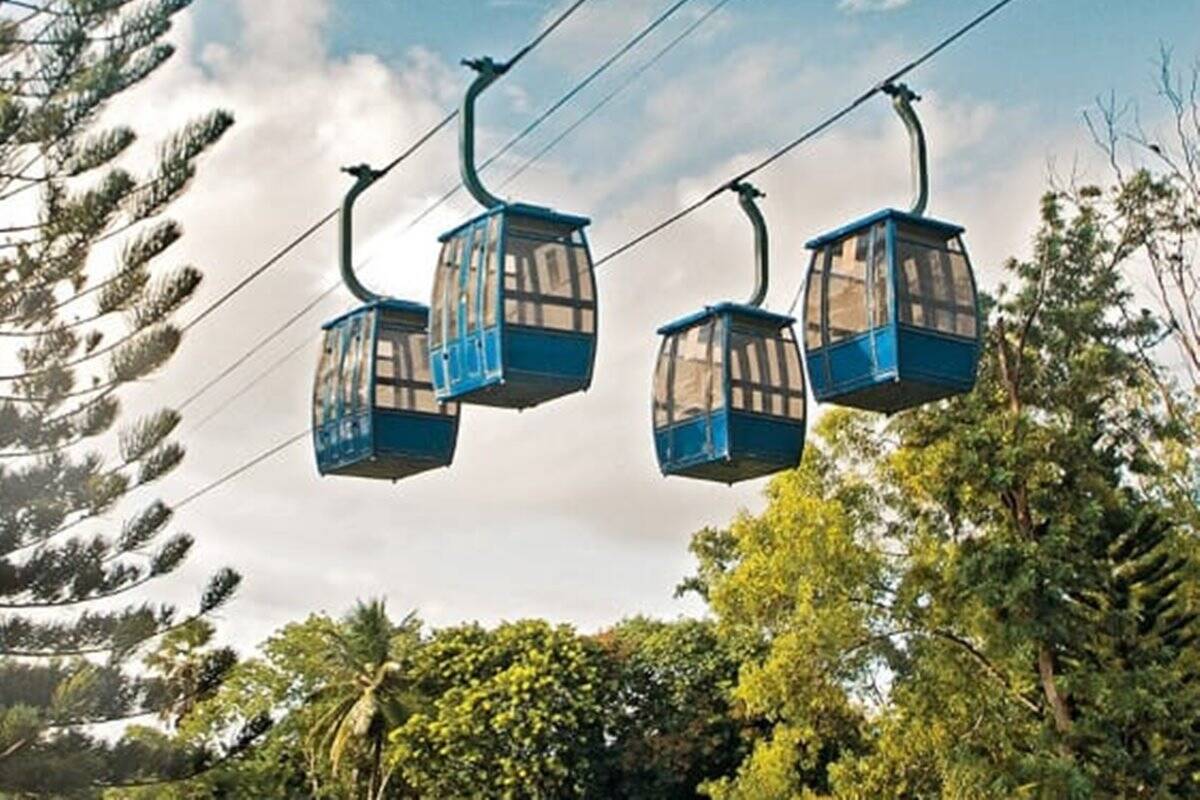Products You May Like

By Aditya Chamaria
Ropeway Industry started in the early 1960’s with installation of 8(eight) nos. of material ropeways in Eastern Coalfield Ltd., Bharat Cooking Coal Ltd., for bringing sand for filing underground mines. All the ropeways were then installed by Breco Ropeway of London.
Related News
In 1970’s two major players, UshaBreco with collaboration of Breco, London and Damodar Ropeways, an Indian company came into the picture and started designing, manufacturing , installing and commissioning of various material ropeways for carrying coal, sand and limestone (raw materials) for the Cement industries.
Damodar Ropeways constructed first ropeway in Balco, Amarkantak 16.8 KM long. Initially these materials ropeways were making heavy noise, buckets were racketing and the movement were jerky. Later on gradually technology improved and it led to the development of smooth and noise free ropeways. Due to the start of conveyor belt system for carrying raw materials like coal, limestone, they could carry much more capacity than the ropeway requirement of material ropeway available.
Era of Passenger Ropeways
Ropeways became such convenient mode of transportation for raw materials that leading players like DRIL and UshaBreco both ventured into building Passenger Ropeways for making commuting easier in the difficult terrain areas. It was only in mid of 1970’s that passenger ropeways became a reality in India. These were very sophisticated, defect and trouble free and safer because the makers paid acute attention to safety parameters as human lives were involved.
The introduction of passenger ropeways came as a breakthrough in the infrastructure and construction industry of India, it began expanding into monocable and bi-cable jigback ropeway pulsating monocable ropeway, detachable monocable and bicable ropeway to name a few. The implementation and execution of these technologies was dependent upon the length, capacity and terrain.
The capacity of these multiple ropeways varied from 500 PPH, 280 PPH in hilly terrain and mountainous areas as per their structure and functions. Difficult terrains became ideal locations for constructing ropeway projects as the access is limited and difficult. The companies involved however in installation of the ropeway project undertook a very strenuous and precise job that involved civil, mechanical, electrical and structural engineering ropeways being tailor-made for each project. This lead to an increase in demand for precision and proper installation of the ropeways and experienced ropeway technicians were required. The industry created a pool of employment for the organized and unorganized workers in huge capacity thus playing a major role in contributing towards India’s development in infrastructure.
First passenger ropeways made by DRIL were at Appughar, the amusement park at New Delhi and UshaBreco first installed the passenger ropeway at Mansa Devi in Haridwar. Thereafter, Damodar Ropeways installed the number of ropeways on EPC and BOOT basis across India. The major ropeways as well as passenger ropeway in India built by DRIL are – Ropeway at Science city, Kolkata, Ropeway at Maihar, Satna,MP, NainaDeviji, H.P., Gangtok, Sikkim, Namchi, Vaishnodeviji , Tawang, Trikut and many more. Recently, the company also installed a passenger ropeway of 2 KM length at mighty Brahmaputra river from South Guwahati to North Guwahati.
Precision and Training
With the advancement in building and erecting these wonders of infrastructure, the popularity and acceptance of ropeways started to fill a gap in the Indian modes of transportation and mobility. Only few experienced players were able to do deliver these end products timely that promised safety and were erected with acute precision. Ropeways being limited in number needed the ropeway engineers to be specially trained and well-equipped since the success of a ropeway project largely depends on its alignment
The model followed by the ropeway construction players was based on zero defect model, therefore until and unless a team of experienced ropeway technicians were involved, the projects foundation was not laid. Companies like DRIL designed and developed programs to train technicians and staff for installation and commissioning of the ropeways to get a safe ropeway project delivered.
Quality Control is a major area of concern among seasoned players in ropeway construction. DRIL being one of them takes pride in no accident report ever since their inception in 1974 due to responsible maintenance and operation team present at all sites, with quality control happening at regular intervals.
(The author is MD, Damodar Ropeways & Infra Limited. Views expressed are personal and do not reflect the official position or policy of the Financial Express Online.)
Get live Stock Prices from BSE, NSE, US Market and latest NAV, portfolio of Mutual Funds, Check out latest IPO News, Best Performing IPOs, calculate your tax by Income Tax Calculator, know market’s Top Gainers, Top Losers & Best Equity Funds. Like us on Facebook and follow us on Twitter.
Financial Express is now on Telegram. Click here to join our channel and stay updated with the latest Biz news and updates.
